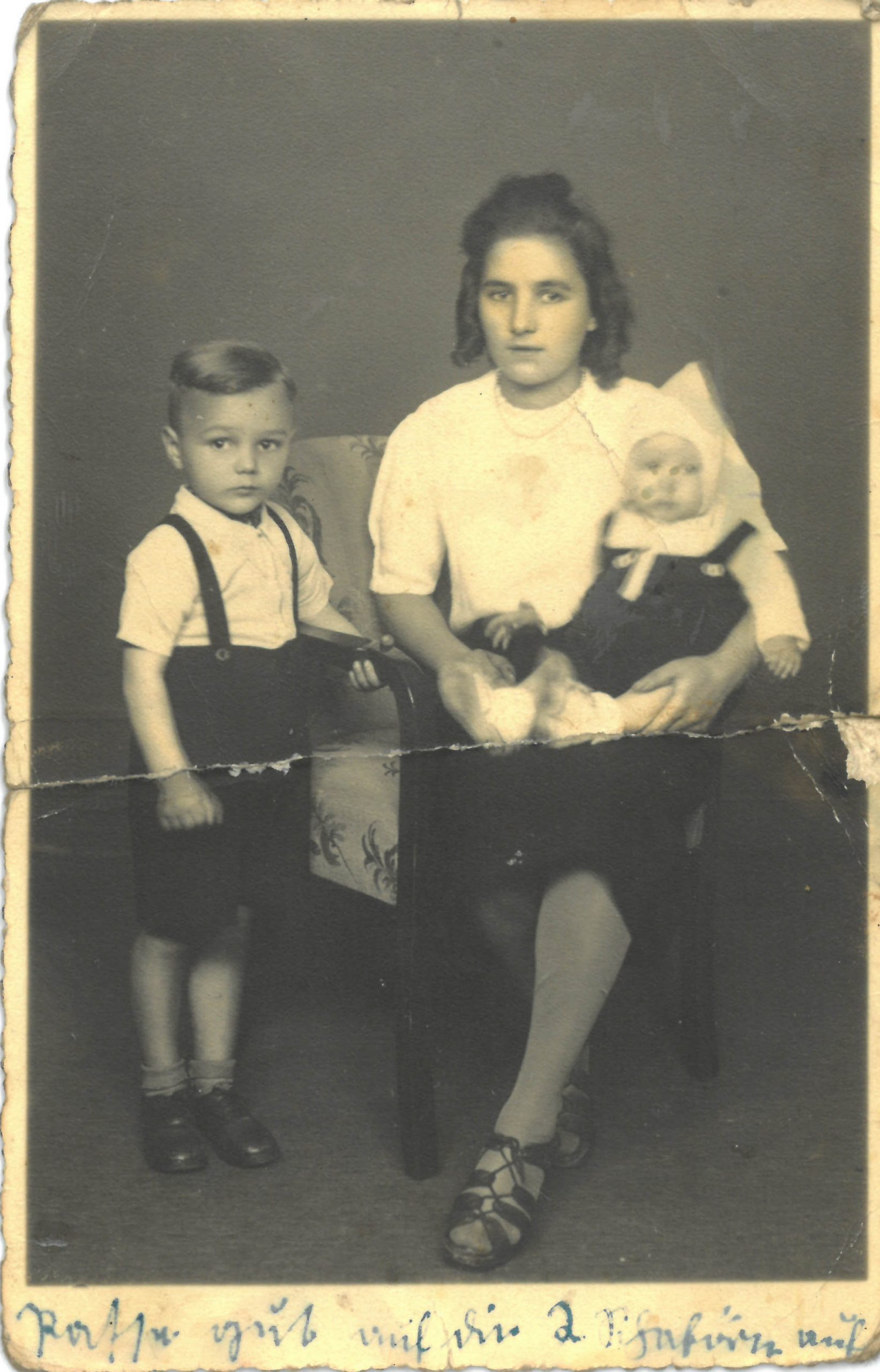The Grand Duchy of Luxembourg has been home to Sinti since the early 18th century. At the beginning of the 20th century, the Luxembourg government pursued a consistent policy of deporting and expelling Sinti and Roma. Gendarmerie and police stations close to the border were instructed to escort so-called ‘Gypsy gangs’ across the border to France or Belgium and prevent them from being sent back to Luxembourg. However, Sinti and Yenish People were welcomed by the villagers, as they sold everyday goods or provided entertainment as showmen at local fairs. The rigid attitude of the authorities continued throughout the 1920s and 1930s, and this was reflected in the fact that Sinti and Roma continued to be prevented from settling in the country.
On 3 May 1932, the Luxembourg government signed an agreement with France and Belgium to regulate the issue of the ‘expulsion of nomads’.1Archives Nationales Luxembourg, J–061–18, Arrangement avec la France et la Belgique relatif au refoulement et au passage des nomades, 0011. In this agreement, the Luxembourg administration continually referred to those affected as ‘roaming Egyptians’, ‘outlaws’ or ‘church thieves’—a term that was already in common use in Luxembourg at the end of the 18th century. Despite the harassment, there is evidence that some families lived in Luxembourg at least temporarily and stayed in Capellen, Itzig, Küntzig and Wasserbillig, among other places. In Limpertsberg, a district of the capital city of Luxembourg, a family from Hungary tried in vain to buy or rent houses. Only those who knew how to hide the fact that they were Sinti or Roma from outsiders were able to settle successfully.
Sinti and Roma, together with Yenish People, were often referred to as ‘Travellers’. For Luxembourg, it can be said that the number of Yenish families was significantly higher than the number of members of the Romanes-speaking minority. By the 19th century at the latest, Yenish families had settled mainly in the suburbs of Luxembourg City, including Weimerskirch. In addition to itinerant trades, they earned their living as showmen, scrap metal dealers or old clothes dealers. In some cases, they gave up their trades and took jobs in the country’s iron and steel industry in order to improve their economic situation.
Under German Occupation
Luxembourg was occupied by the German Wehrmacht on 10 May 1940. A few months later, on 2 August, Gustav Simon (1900–1945), Gauleiter of the Gau Koblenz-Trier, took over the civil administration (as Chief of the Civil Administration, CdZ). His mission was to Germanise and Nazify Luxembourg. The newly acquired territory was to be incorporated into the German Reich, and this was achieved de facto in 1941 with its annexation to the Gau Koblenz-Trier (later renamed Gau Moselland).
The Nuremberg Laws were introduced in Luxembourg on 5 September 1940. Although Sinti and Roma were also subject to this racist special legislation in the German Reich, as far as we know so far, the ‘race laws’ only applied to Jews in Luxembourg. They were systematically disenfranchised and dispossessed, and synagogues were looted or destroyed. In an initial phase, at least 3,000 Jewish people, the majority of whom had emigrated to Luxembourg since 1933, fled westward. Jewish escape aid networks helped them to obtain the necessary visas. The second phase of the persecution of Jewish people in Luxembourg began on 16 October 1941 with the first deportation to the Litzmannstadt ghetto. Six more transports were to follow until 1943. In total, around 1,300 Jews from Luxembourg became victims of the Shoah.
The Einsatzkommando of Security Police (Sipo) and Security Service (SD) in Luxembourg (EKL), which comprised the Gestapo as well the criminal investigation department and the SD, was responsible for the persecution of Sinti and Roma in the country. The identification of Sinti and Roma was the responsibility of the criminal police, whose bulletins for Luxembourg regularly dealt with matters and decrees on ‘Gypsy issues’. The extent to which the Berlin-based Reich Central Office for Combating the Gypsy Nuisance played a role after the occupation of the country has not yet been clarified. However, several official initiatives show that the occupying power was convinced that there were ‘Gypsies’ in occupied Luxembourg. For example, on 22 January 1943, the tax office drew attention to the ‘special treatment of Gypsies in the administration of the wage tax’, and on 12 October 1943, a commissioner for taxation and customs at the CdZ in Luxembourg ordered a nationwide registration of civil status data, including that of ‘Gypsies’, for the districts of Esch/Alzette, Diekirch and Grevenmacher with a view to issuing wage tax cards for 1944.
Refugee Support Networks
There are several reports of networks in Luxembourg that tried to protect Sinti from Nazi persecution. For example, Hans Braun (1923–1999), who lived in Bernau, Germany, fled to Luxembourg in late 1941 or early 1942 to join Sinti living there, some of whom were related to him. In an interview he reported that they gave him a fake Kraft durch Freude (KdF) identity card which allowed him to live in Luxembourg for a year without being recognised. Together they hired themselves out as musicians and, according to him, lived in a hotel with an adjoining swimming pool, which was run as a KdF centre during the Nazi occupation of Luxembourg. It can be assumed that this was the inn known as the Gantenbeinsmillen (which had a swimming pool), located between Luxembourg City and the suburb of Hesperingen. However, apart from some mutually consistent stories told within the community, nothing else is known about this network. Yenish People also offered shelter, protection and food to persecuted Sinti both in Luxembourg and in the border region with Belgium. According to current knowledge, several Sinti in Luxembourg-Pfaffenthal were most likely hidden in a warehouse belonging to a Yenish trading family, and it is certain that others were hidden in the home of a Yenish family in the Ösling, a heavily wooded area of the Ardennes bordering St. Vith.
For their part, the criminal investigation department assumed that ‘Gypsies’ were living in Luxembourg under false names. The police bulletin of 9 January 1943, for example, names members of the Rose family, namely Anton (1874–1944), Vinzenz (1908–1996) and Oskar Rose (1906–1968) as wanted individuals. According to Hans Braun, at least Oskar and Vinzenz Rose stayed in Luxembourg temporarily under false names and helped him to escape. Some Sinti families living in Luxembourg, like the family of Jacques Delfeld Sr., born in Luxembourg in 1951, managed to live in the country throughout the entire occupation period without being identified as ‘Gypsies’. They managed this because they only spoke Luxembourgish outside the family.
Deportations from Luxembourg and Deportations of Luxembourg Sinti
Although a deportation order was issued for Luxembourg on 29 March 1943 in connection with the Auschwitz decree issued by Heinrich Himmler (1900–1945), there is no evidence to date that there were any initiatives for a coordinated deportation in Luxembourg. However, there are several known cases in which people who had been registered as ‘Gypsies’ by the criminal police in the German Reich were arrested on Luxembourg territory and subsequently deported to Auschwitz-Birkenau: Hans Braun, mentioned above, who had fled to Luxembourg in stages a second time after returning to his family in Germany, was deported via the prison in Luxembourg-Grund on 22 April 1943. His two cousins, Hugo Ernst (1918–unknown) and Wilhelm Ernst (1921–1943), were deported from Luxembourg on the same day.
Robert Georg Lehmann (1942–1944), born on 24 March 1942 in Niederkorn, Luxembourg (a district of Differdange), was picked up personally by an employee of the Duisburg criminal investigation department in Niederkorn on 7 March 1944, because his foster parents—the child’s father’s sister and her husband—had refused to hand him over. From Duisburg, the toddler was deported with his five-year-old brother Egon Karl Lehmann to Auschwitz-Birkenau, where they both died soon afterwards.

Christine Lehmann mit ihren Kindern Egon Karl (links) und Robert Georg, 1942. Aufgrund der „Nürnberger Gesetze“ war es Christine Lehmann verboten worden, den Vater der Kinder zu heiraten. Christine Lehmann wurde im Juli 1943 in das Konzentrations- und Vernichtungslager Auschwitz-Birkenau deportiert und dort ermordet. Vergeblich hatten sie und der Kindsvater versucht, die Kinder zu retten. Robert Georg Lehmann wurde von der Kriminalpolizei Duisburg, Deutschland, im Februar 1944 aus Luxemburg abgeholt und wenig später zusammen mit seinem Bruder ebenfalls nach Auschwitz-Birkenau deportiert. Auch sie überlebten nicht.
Die Fotografie ist das letzte Zeugnis von Mutter und Söhnen. Sie wurde im September 1942 an eine Verwandte geschickt und trägt die Aufschrift „Passe gut auf die 2 tschawe [Romanes: Kinder] auf.“
Fotograf:in: unbekannt (Studioaufnahme)
Sammlung Mario Reinhardt
In addition, around 20 other Sinti with a direct connection to the Grand Duchy can be identified who were victims of National Socialist persecution. These include people who were born in the Grand Duchy but were later arrested in the German Reich and deported to Auschwitz-Birkenau or other concentration camps, where some of them were murdered. One of these was Anna Weinand née Kreitz (1912–unknown), born in Mertert near Wasserbillig, who was deported to Auschwitz-Birkenau from Niedermendig, county Mayen in today’s Rhineland-Palatinate, and did not survive. Max Winter (1938–presumably 2004), who was born in Luxembourg City, had lived there with his family since 1938. It is not possible to determine exactly how long the family had been in Luxemburg before that. They registered in Cologne on 16 December 1939. Like other Sinti, the Winter family was deported to the so-called General Government in German-occupied Poland in May 1940. Max Winter and his father survived, but the whereabouts of the remaining family members have not yet been determined.
At the beginning of September 1944, most of Luxembourg was liberated by the US army. However, it was only after the end of the ‘Battle of the Bulge’ in January 1945 that the German occupiers were driven back from the entire territory of Luxembourg.
After the Liberation
After the war, the persecution of Sinti and Roma from Luxembourg went unnoticed for decades, although the first mentions were made as early as 1961 during the trial of Adolf Eichmann (1906–1962): Jewish survivor Aharon Beilin (1908–unknown) reported in his testimony on 7 June that people from Luxembourg had also been sent to the section of the camp in Auschwitz-Birkenau designated for ‘Gypsies’. According to an estimate by the Belgian scholar Alain Reyniers (born 1952), between 200 and 500 ‘Travellers’ from Luxembourg were victims of Nazi persecution. This figure has not yet been confirmed. Until the 2020s, only a few researchers dedicated themselves to the history and persecution of Sinti and Roma in Luxembourg.




